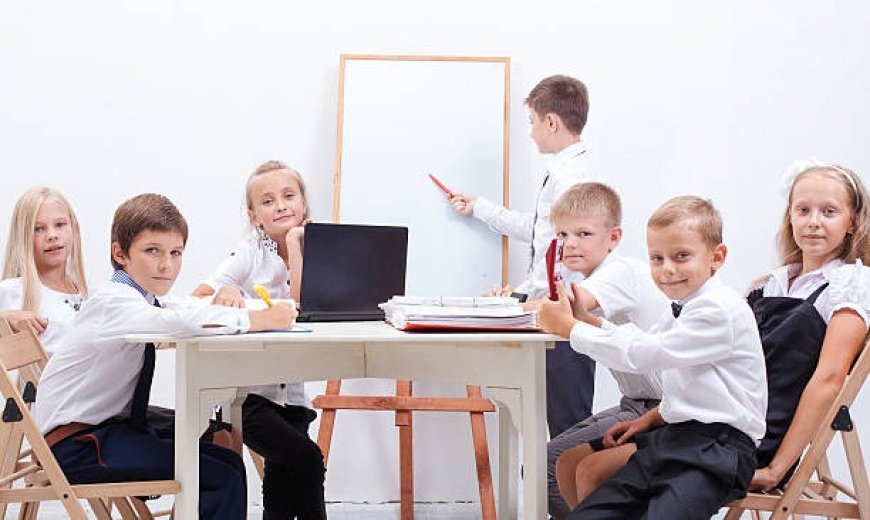The 5 Advantages of Portable Schools
Discover the top 5 benefits of portable schools—flexibility, cost-efficiency, quick setup, mobility, and space optimization.

Purchasing or renting a portable school provides educational organizations with a custom, flexible space. These structures are suitable for many activities, including traditional learning, staff training, and extracurricular programs. Here are five advantages of installing portable classrooms:
1. Provide Prompt Solutions
Portable schools can be set up quickly, so they are ideal for meeting emergency or short-term educational needs. If a school district experiences a sudden increase in enrollment due to population growth or new housing developments, portable classrooms provide additional space. They are an efficient solution for accommodating more students without the delay of building a larger permanent facility. Portable structures are also beneficial if schools need to add new programs to their curriculum. They provide a space for things like extracurricular activities or tutoring services.
Modular building providers install the portable classrooms directly on school grounds. This on-site setup lets students learn without being bussed to a different, less familiar location. Schools can strategically position the units in areas that minimize disruption to traffic flow, playgrounds, or core facilities. The installation process typically requires less invasive site work than traditional construction. This may help reduce noise, dust, and interruptions to the regular school schedule.
2. Offer Building Flexibility
Temporary classrooms are portable and can be removed or relocated to fit a school's changing needs. Administrators may expand the module or rearrange the interior walls to suit varying priorities at different times of the year. A portable classroom can start out as a space for students, but if enrollment decreases, the school may then use it as a teacher workroom or seasonal storage space.
3. Support Educational Institutions
Different educational organizations can benefit from installing a portable classroom. This includes:
-
Preschools and Early Childhood Centers
-
Public K-12 Schools
-
Colleges and Universities
-
Charter Schools
-
Private Campuses
-
After-School Programs
-
Vocational and Technical Training Centers
-
Adult and Continuing Education Programs
Learning centers and schools may use modular units to create quiet, personalized learning environments. Designing the classrooms with smaller restrooms and child-safe materials helps cater to younger students. For adult learners, organizations can add tools and equipment to support hands-on instruction for trades like cosmetology or auto repair.
4. Offer Customizable Layouts
Portable schools are customizable, so organizations can create a layout and add specific features that meet their program or enrollment size needs. This lets schools design open-plan classrooms for group learning or partitioned spaces for individual instruction. The structures may include built-in storage solutions, whiteboards, and projectors to aid teaching. Some units have heating and air conditioning systems to cater to hot or cold local climates. Manufacturers also offer options with self-sufficient features, such as waste systems and generators, for schools located in rural areas.
Additional customizable features include the structure's color and aesthetic. Manufacturers offer various interior and exterior design options. Schools may choose to incorporate their mascot colors or use finishing materials that match their main buildings. This helps produce a cohesive look across the campus. Interior choices like flooring, wall materials, and lighting are also customizable, so schools can create practical and professional learning environments. They may use durable flooring in high-traffic areas and softer options in play spaces.
5. Provide Multiple Solutions
Portable classrooms are suited for many purposes beyond traditional education. Organizations use them as administrative offices, science or computer labs, locker rooms, and libraries. They may also design them to be gyms or cafeterias. Some manufacturers can add full-service kitchens and state-of-the-art recreation features for these purposes. If there's a natural disaster or an unplanned school renovation, the portable unit can also serve as a temporary facility for teaching or disaster recovery efforts. The adaptability of these buildings makes them a practical investment, and it allows schools to meet a wide range of needs without committing to permanent construction.
Expand Your Space With Portable Classrooms
Modular classrooms work for both short-term solutions and extended use over several years. They are designed with specific layouts, technology, and finishing materials to meet educational needs. Their portable design also allows schools to move them when needed, such as if enrollment shifts or a program needs to be relocated to a different part of the campus. Contact a modular building provider today to discuss their custom structures and education solutions.







